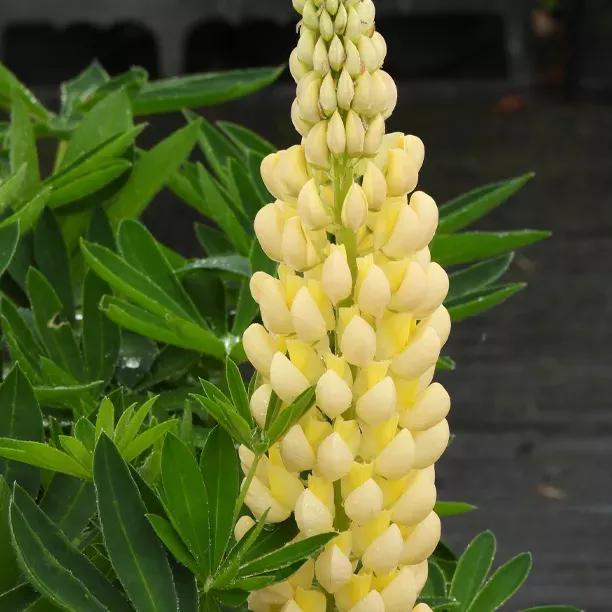Desert Sun Lupin Plants
The details
Lupinus, West Country Range
Pot Grown Herbaceous Perennials- Colour: Custard Yellow
- Flowering: June - July
- Mounds of mid-green foliage
- Cutting: Yes
- Height: 90cm
- Spread: 65cm
Recommended extras
Description
'Desert Sun' Lupin Plants, Westcountry Range. 2 Litre Pots
The lemony custard freshness amongst its own lush emerald foliage looks great in the evening light.
Creamy-white buds burst into shades of sunshine on this tall, statuesque plant that has been a popular choice amongst Chelsea Flower Show designers to provide vertical accents in recent years. Peppery scent.
Browse our other lupin varieties or all our perennial plants.
Features
- Colour: Custard yellow
- Flowering: June - July
- Mounds of mid-green foliage
- Cutting: Yes
- Height: 90cm
- Spread: 65cm
- Position: Full sun or partial shade
- Soil: Moist but well-drained, acid to neutral
- Planting instructions supplied
Wild lupin seeds were eaten in the past, but this is no longer possible with modern varieties, so please do not eat any part of them.
Growing Desert Sun Lupins
Being of the pea family, lupins are nitrogen fixers and will perform well enough in poor soil, but for a good display they like plenty of organic matter and consistent moisture during the growing season. The ideal soil pH is neutral to mildly acidic, but as long as you aren't growing on a thin topsoil over shallow chalk they should be fine anywhere with fairly decent drainage: damp is fine, but their crowns tend to rot if waterlogged in winter. They are shade-tolerant and suitable for north-facing sites, although the flowers will be a bit less impressive.
Desert Sun in Your Garden Design
Whether dotted singly around a nostalgic cottage garden, or in massed, formal ranks, modern lupins add plenty of oomph to the border, introducing height, bold colour, and earthy scents.
Cultivation Instructions
Lupins should be planted in a sunny or semi-shaded spot, preferably in moist but well-drained soil as they dislike anything that stays really wet in winter. Water regularly until well established, and water mature plants during dry periods to avoid mildew.
Aphids love lupins, and slugs and snails can do a lot of damage to young plants and new spring growth, so be ready to sluggo them on sight. You can rub off aphids by hand or spray them off with a jet of water, or bug spray them. It is best to entirely remove a badly affected flower stem as soon as you see it, rather than try to save it.
Aphids will dictate the best time to tidy your plants each year. If you have no problem with them, you can leave the leaves and stems for winter interest, and chop them back in early spring to make way for new growth. If aphids are causing problems, then chopping your plants down to the ground in September will also get rid of their eggs, depriving them of a running start next year.
Feed with a general-purpose fertiliser in spring, or some bonemeal or seaweed. Feed them occasionally during the growing season.
Remove faded flower stems as soon as they fade to encourage a new flush of flowers in early autumn. Staking is only necessary in very windy locations: do this in spring, before the flower spikes appear.
Propagation works best from basal cuttings; the seeds will vary from the parent.



